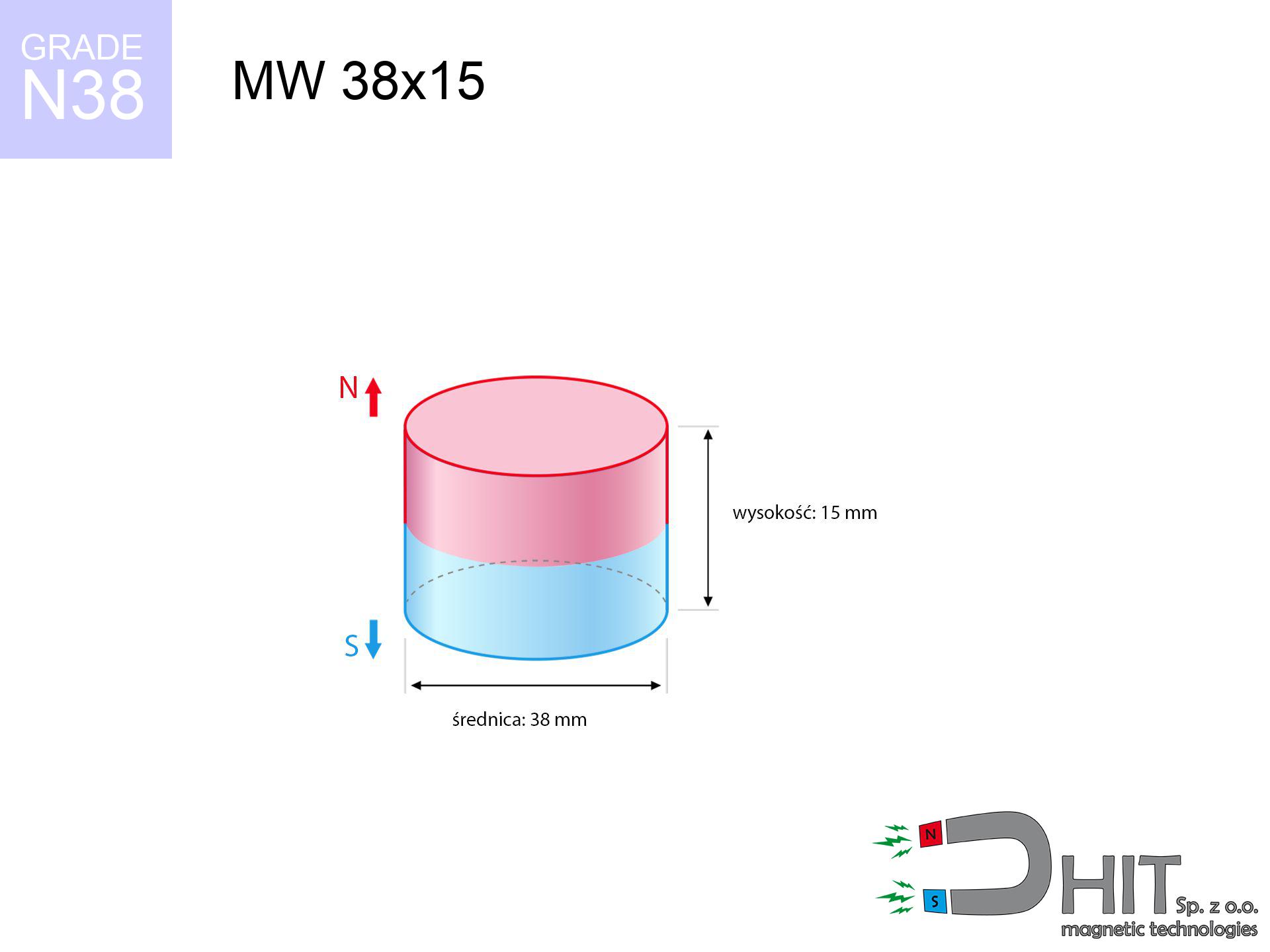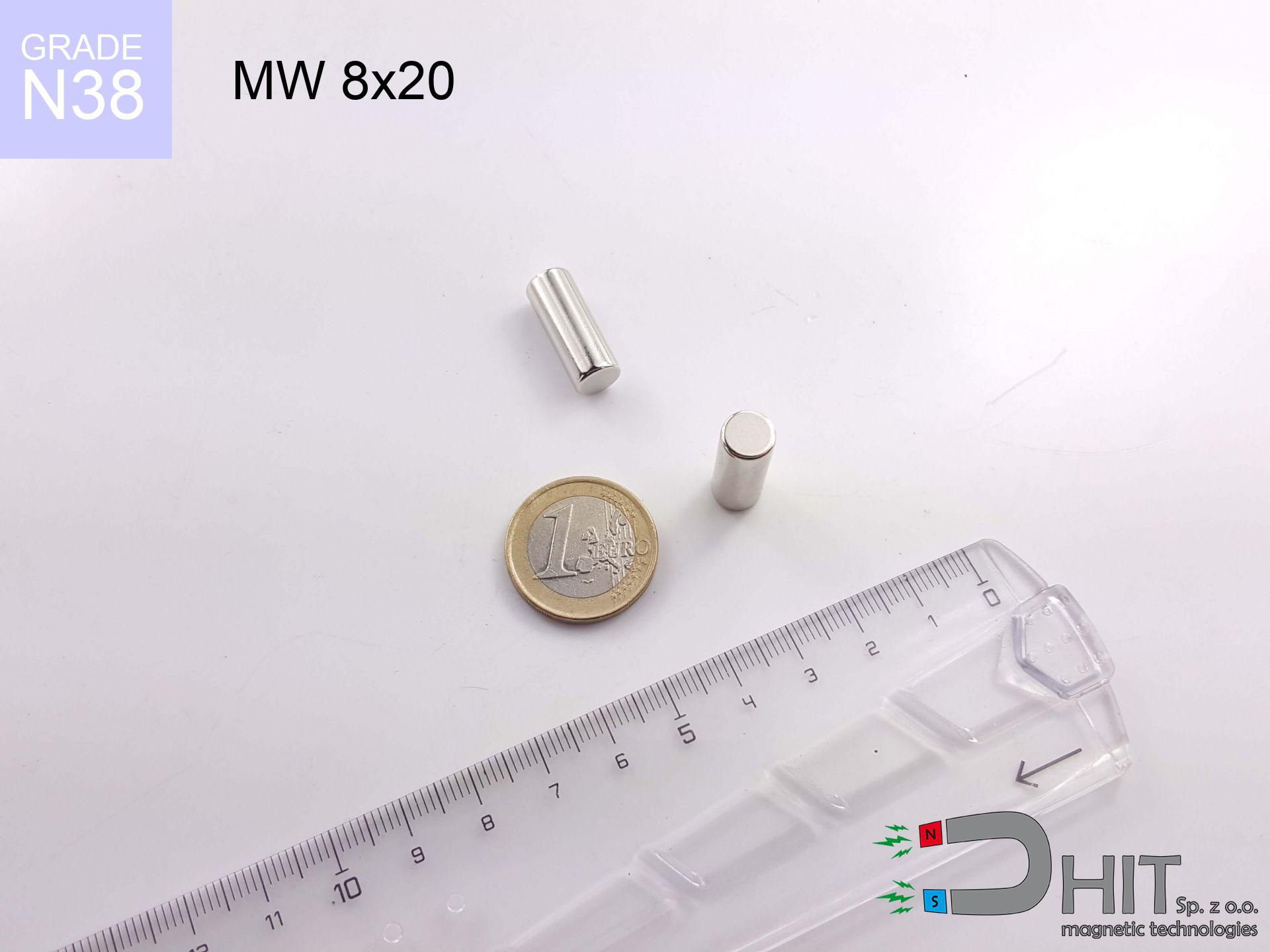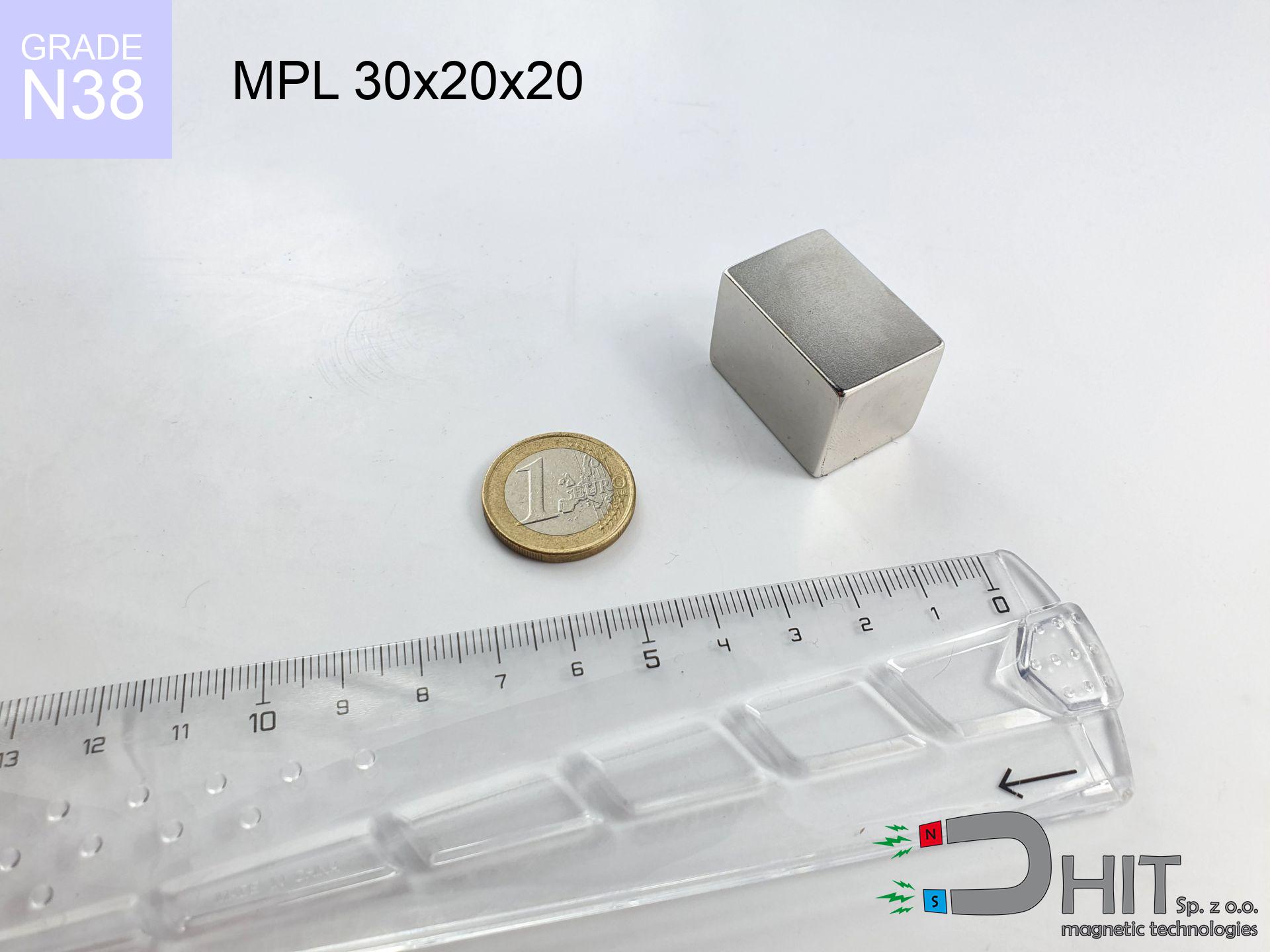MW 38x15 / N38 - cylindrical magnet
cylindrical magnet
Catalog no 010061
GTIN: 5906301810605
Diameter Ø
38 mm [±0,1 mm]
Height
15 mm [±0,1 mm]
Weight
127.59 g
Magnetization Direction
↑ axial
Load capacity
31.52 kg / 309.11 N
Magnetic Induction
384.07 mT
Coating
[NiCuNi] nickel
70.00 ZŁ with VAT / pcs + price for transport
56.91 ZŁ net + 23% VAT / pcs
bulk discounts:
Need more?Looking for a better price?
Call us now
+48 888 99 98 98
or drop us a message using
our online form
our website.
Parameters and shape of magnets can be analyzed with our
modular calculator.
Orders placed before 14:00 will be shipped the same business day.
Magnetic properties of material N38
Physical properties of sintered neodymium magnets Nd2Fe14B at 20°C
Shopping tips
Pros as well as cons of neodymium magnets.
Besides their remarkable magnetic power, neodymium magnets offer the following advantages:
- Their power is maintained, and after approximately 10 years it drops only by ~1% (theoretically),
- Neodymium magnets prove to be exceptionally resistant to magnetic field loss caused by external field sources,
- Thanks to the elegant finish, the plating of nickel, gold, or silver-plated gives an elegant appearance,
- The surface of neodymium magnets generates a maximum magnetic field – this is one of their assets,
- Made from properly selected components, these magnets show impressive resistance to high heat, enabling them to function (depending on their shape) at temperatures up to 230°C and above...
- Thanks to modularity in forming and the ability to customize to client solutions,
- Universal use in future technologies – they serve a role in HDD drives, motor assemblies, diagnostic systems, as well as industrial machines.
- Relatively small size with high pulling force – neodymium magnets offer high power in tiny dimensions, which allows their use in miniature devices
Disadvantages of NdFeB magnets:
- They are prone to damage upon heavy impacts. To avoid cracks, it is worth securing magnets in special housings. Such protection not only shields the magnet but also improves its resistance to damage
- NdFeB magnets demagnetize when exposed to high temperatures. After reaching 80°C, many of them experience permanent drop of power (a factor is the shape as well as dimensions of the magnet). We offer magnets specially adapted to work at temperatures up to 230°C marked [AH], which are extremely resistant to heat
- Due to the susceptibility of magnets to corrosion in a humid environment, we suggest using waterproof magnets made of rubber, plastic or other material stable to moisture, when using outdoors
- Limited ability of creating nuts in the magnet and complicated forms - preferred is a housing - magnetic holder.
- Potential hazard resulting from small fragments of magnets pose a threat, when accidentally swallowed, which is particularly important in the context of child safety. It is also worth noting that small elements of these magnets are able to disrupt the diagnostic process medical in case of swallowing.
- With large orders the cost of neodymium magnets is a challenge,
Best holding force of the magnet in ideal parameters – what contributes to it?
Breakaway force was determined for ideal contact conditions, including:
- on a plate made of structural steel, optimally conducting the magnetic flux
- possessing a thickness of minimum 10 mm to avoid saturation
- with an ground contact surface
- with zero gap (no impurities)
- during pulling in a direction perpendicular to the mounting surface
- at room temperature
Key elements affecting lifting force
Bear in mind that the working load will differ influenced by the following factors, in order of importance:
- Space between magnet and steel – even a fraction of a millimeter of separation (caused e.g. by varnish or dirt) drastically reduces the magnet efficiency, often by half at just 0.5 mm.
- Direction of force – maximum parameter is reached only during pulling at a 90° angle. The force required to slide of the magnet along the plate is typically several times lower (approx. 1/5 of the lifting capacity).
- Steel thickness – too thin sheet does not accept the full field, causing part of the flux to be escaped to the other side.
- Steel type – low-carbon steel attracts best. Higher carbon content lower magnetic properties and holding force.
- Surface quality – the smoother and more polished the plate, the larger the contact zone and stronger the hold. Roughness creates an air distance.
- Temperature influence – hot environment reduces magnetic field. Too high temperature can permanently damage the magnet.
* Lifting capacity testing was conducted on plates with a smooth surface of optimal thickness, under perpendicular forces, in contrast under shearing force the lifting capacity is smaller. Moreover, even a minimal clearance {between} the magnet and the plate reduces the lifting capacity.
Safety rules for work with NdFeB magnets
Physical harm
Watch your fingers. Two powerful magnets will snap together immediately with a force of several hundred kilograms, destroying anything in their path. Be careful!
Allergy Warning
It is widely known that nickel (the usual finish) is a potent allergen. If you have an allergy, avoid touching magnets with bare hands and select coated magnets.
Do not give to children
Neodymium magnets are not suitable for play. Eating several magnets can lead to them pinching intestinal walls, which poses a critical condition and necessitates immediate surgery.
Operating temperature
Regular neodymium magnets (grade N) lose magnetization when the temperature exceeds 80°C. Damage is permanent.
Material brittleness
Despite the nickel coating, neodymium is brittle and cannot withstand shocks. Do not hit, as the magnet may shatter into hazardous fragments.
Combustion hazard
Mechanical processing of neodymium magnets carries a risk of fire hazard. Magnetic powder oxidizes rapidly with oxygen and is difficult to extinguish.
Precision electronics
GPS units and mobile phones are highly sensitive to magnetic fields. Close proximity with a powerful NdFeB magnet can ruin the internal compass in your phone.
Medical implants
Health Alert: Neodymium magnets can turn off pacemakers and defibrillators. Stay away if you have electronic implants.
Data carriers
Do not bring magnets near a wallet, laptop, or screen. The magnetism can permanently damage these devices and erase data from cards.
Handling rules
Before use, read the rules. Uncontrolled attraction can destroy the magnet or injure your hand. Think ahead.
Safety First!
Learn more about risks in the article: Magnet Safety Guide.







![SM 32x475 [2xM8] / N42 - magnetic separator SM 32x475 [2xM8] / N42 - magnetic separator](https://cdn3.dhit.pl/graphics/products/sm-32x475-2xm8-jot.jpg)

